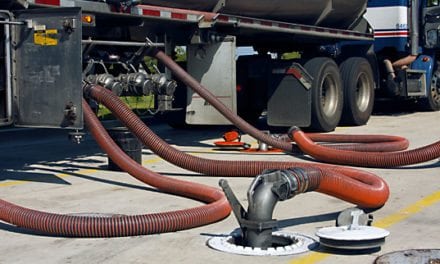—Oil Prices Could Move “Lower for Longer”
- Crude oil in the $20’s a real possibility
- Lower price might not reduce production
- Over 17 million barrels daily of crude refined in past weeks a record
- Natural gas stocks 22.5 per cent higher than last year
Sincerely, Alan Levine Chairman, Powerhouse
Table covers crude oil and principal products. Other products, including residual fuel oil and “other oils” are not shown, and changes in the stocks of these products are reflected in “Total Petroleum Products.” Statistics Source: Energy Information Administration “Weekly Petroleum Status Report” available at www.eia.doe.gov
The Matrix
Energy market prices have been winding lower for over a year now. The $107.73 high of June, 2014 is a distant memory. Support levels have been broken several times on the way down.
WTI crude oil fell to $42.03 in March and, to predictions of crude oil in the twenties, bounced back. A rally to the low sixty dollar range followed.
A new price reduction began around July 3. The week ending August 7 saw prices breaking below $45, ready to challenge support.
Market technicians are now taking the possibility of crude oil prices in the twenties seriously. A crude oil price with a twenty handle was last seen in December, 2003.
Before that can occur, however, the market will have to break support levels last experienced during the economic crisis of 2008-09. Next support below $42.03 is $39.44. Additional support can be found at $37.65, $34.13 and $33.55. The crisis low was $33.20, reached during the week ending January 16, 2009.
Technical analysis offers a potential recovery to $52 and a deep test to $25.25. Projections for refined products point to $1.15 for RBOB and possibly below a dollar for ULSD.
Financial analysts, normally an optimistic bunch, are joining the bears. One large bank now expects oil price to remain “lower for longer.” The economic situation has changed, it says. Higher stresses on financial obligations and operations, improved efficiency, lower costs and a strong dollar should support production.
These elements have reduced the financial community’s expectation of any rapid increase in prices. They also recognize that achieving balance between oil supply and market demand will be a harder task than previously expected. The bank believes that the oil price faces the risk of skewing substantially lower.
Supply/Demand Balances
Supply/demand data in the United States for the week ending July 31, 2015 were released by the Energy Information Administration.
Total commercial stocks of petroleum decreased 0.3 million net barrels during the week ending July 31, 2015.
Builds were reported in stocks of RBOB, distillates, propane, and other oils. Draws were reported in stocks fuel ethanol, K-Jet Fuel, and residual fuel oil.
Crude oil supplies in the United States decreased to 455.3 million barrels, a draw of 4.4 million barrels.
Crude oil supplies decreased in four of the five PAD Districts. PADD 1 (East Cost) stocks fell 0.2 million barrels. PADD 2 (Midwest) stocks decreased 0.6 million barrels. PADD 3 (Gulf Coast) stocks declined 3.4 million barrels, and PADD 5 (West Coast) stocks experienced a decline of 0.8 million barrels. PADD 4 (Rockies) crude oil stocks fell 0.5 million barrels.
Cushing, Oklahoma inventories decreased to 57.2 million barrels, a draw of 0.5 million barrels.
Domestic crude oil production increased 52,000 barrels daily to 9.465 million barrels per day. This addition to crude oil production came from the Lower 48 states.
Crude oil imports averaged 7.180 million barrels per day, a daily decrease of 0.365 million barrels.
Refineries used 96.1 per cent of capacity, an increase of 1.0 percentage points from the previous week.
Crude oil inputs to refineries increased 313,000 barrels daily; there were 17.075 million barrels per day of crude oil run to facilities. Gross inputs, which include blending stocks, increased 177,000 barrels per day to 17.261 million barrels daily.
Total petroleum product inventories saw an increase of 4.1 million barrels. Gasoline stocks grew 0.8 million barrels; total stocks are 216.7 million barrels.
Total product demand fell 25,000 barrels daily to 20.221 million barrels per day.
Demand for gasoline increased 348,000 barrels per day to 9.687 million barrels daily.
Distillate fuel oil supply gained 0.7 million barrels. Stocks are 144.8 million barrels. National demand was reported at 3.780 million barrels per day during the report week. This was a weekly increase of 0.151 million barrels daily.
Propane added 0.9 million barrels to supply. There are 90.4 million barrels in storage. Current demand is estimated at 1.055 million barrels per day, an increase of 197,000 barrels daily from the previous report week.
Natural Gas
According to the EIA: Net storage injection is lower than both the five-year average and last year’s builds. The net injection reported for the week ending July 31 was 32 Bcf, down from 52 Bcf the previous week. This compares with the five-year average increase of 53 Bcf for the week and last year’s increase of 83 Bcf.
Injections of natural gas into storage since April are 20% higher than the five-year average (2010-14), but trail last year’s record-high levels by 7.5%. Last year saw record high levels over the same period.
During the first four months of the 2015 natural gas storage injection season, which typically runs from April through the start of November, injections have totaled 1,436 billion cubic feet (Bcf). Inventories as of July 31 were 2,912 Bcf, 535 Bcf, or 22.5% more than 2014, and 64 Bcf (2.2%) more than the five-year (2010-14) average for the week ending July 31.











